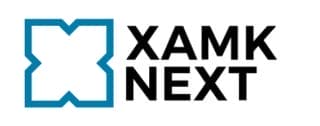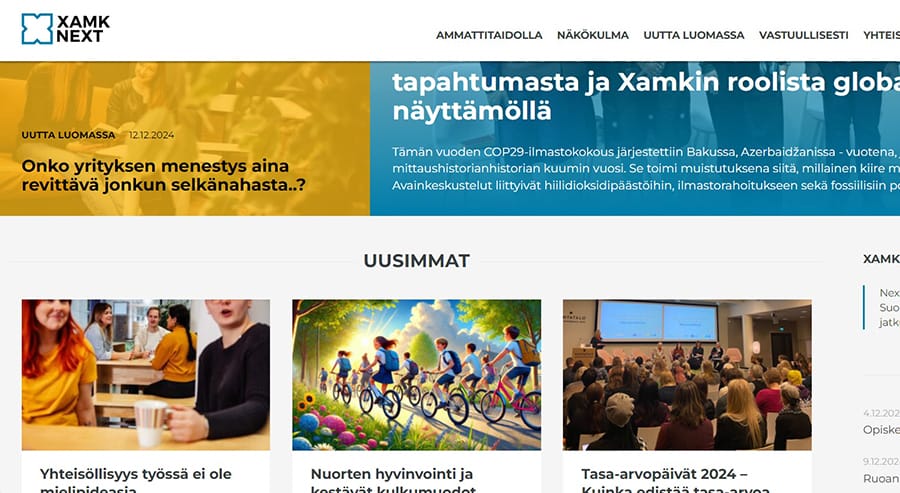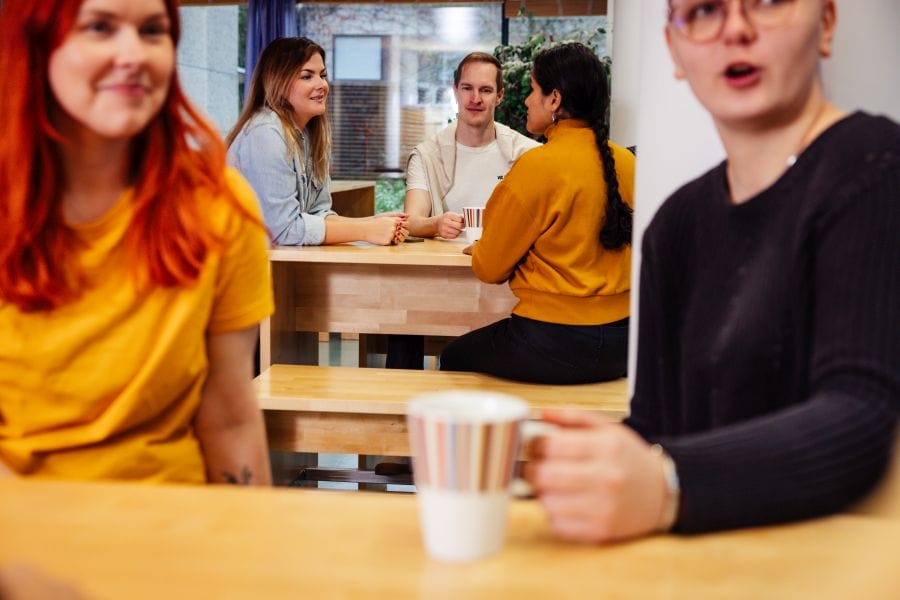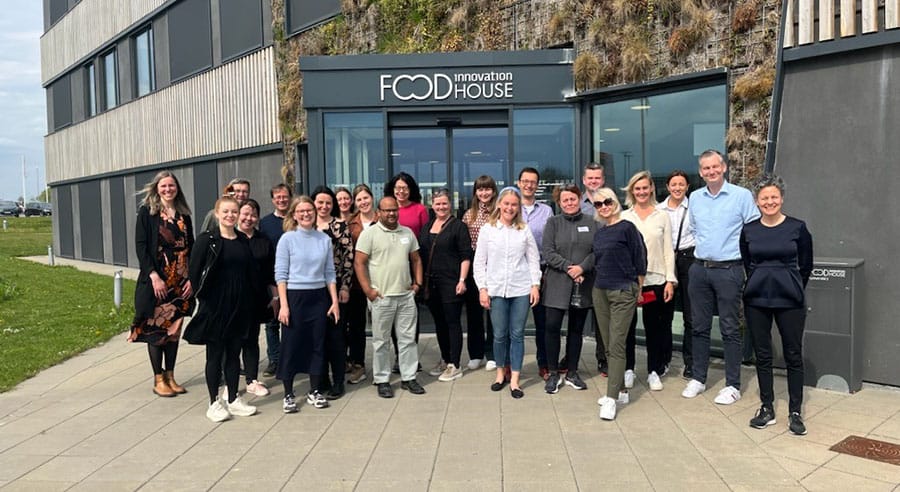Service Design Flows through Cha Cha Chaa
The solution consists of three components targeted to governance, demand and production side, which will contain material for the transformation of the food environments towards sustainability and circularity, and summarise this in a digital format. The solution will be tested in eight local innovation cases that will be implemented with various pilots.
All the project partners gathered in Vejle, Denmark, at the beginning of May 2023. The primary purpose of the visit was to carry out a two-day workshop to advance the project’s activities, but we were lucky to be also introduced to the tastes of Vejle. We learned more about the food culture and the development of the food sector in Vejle, and the operations of our Danish project partners Food Innovation House and Culinary Institute. We also visited Science-center Økolariet which offers educational and experiential exhibitions on sustainable development and the carrying capacity of the world’s nature from different perspectives. And of course, we got to taste some delicious food.
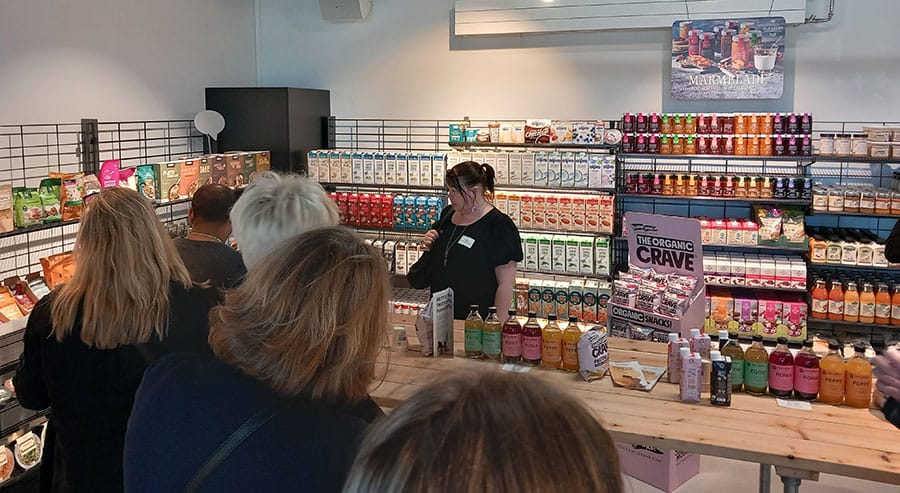
Developing with Double Diamonds
The workshop’s goal was to create different tools for piloting three components of the KISMET solution. The workshop was built according to the Double Diamond model, the development process in service design. The Double Diamond model can be roughly divided into four parts; discover, define, develop, and deliver.
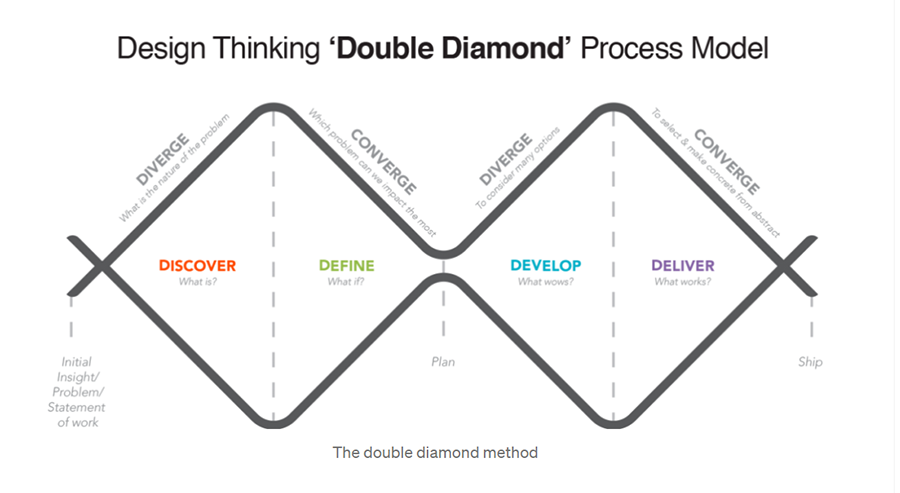
Source: Double Diamond: o que é e como usar? – Redspark
The purpose of the discover phase is to gather an understanding of the issue requiring a solution and understanding of the customer or user. Then, the need for development is defined based on the understanding gained, and new solutions are invented. Ideas are developed further, and their functionality is evaluated by testing the prototypes with users. Finally, the developed and evaluated ideas are delivered to the customer. Early testing of ideas and concepts is resource-efficient and can be used to create genuinely user-oriented services.
On the first day of the workshop, the participants were divided into multi-professional and international groups of four. The partners were represented by almost 30 persons from seven Baltic Sea Region countries: Sweden, Finland, Estonia, Germany, Latvia, Lithuania, and Denmark.
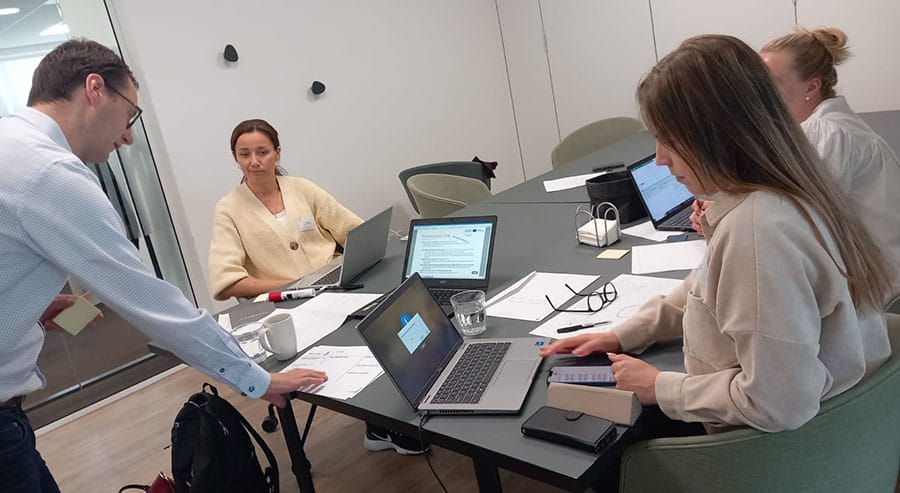
The groups started working by studying the data collected beforehand in the project and highlighting existing useful tools or operating models. The participants also defined the target group of the project’s activities and their challenges. This way, the participants got an overall picture of the current situation, the target group, and their needs. Based on the collected and analyzed information, the participants ideated solutions to the challenges of the target group and the implementation of the local innovation cases. Each group had to ideate nine ideas related to different components by using an idea card template, and the result of the day was over 50 idea cards. Then, the idea cards were themed using an affinity diagram into various themes.

On the second day of the workshop, the participants were divided into new small groups and continued developing the themed ideas into preliminary tool concepts. Mixing groups aim to get the most versatile view for the development work. Based on the given idea cards, each group developed different tool concepts related to different themes and project activities. The concepts were presented at the end of the day, and feedback was collected by using the Learning Cafe method. The result was 19 preliminary tool concepts, which the partners will test and develop further in the project’s activities and pilot cases.
The process of service design is like Cha Cha Cha
The creative process is always tricky initially and often needs clarification. A feeling often accompanies it; what is expected of me now? However, when large entities are broken down into smaller pieces and things are worked through together, the process flow slowly opens up, and light can be seen at the end of the tunnel.
The facilitator of the workshop told the participants that the process of service design is a bit like Finland’s Eurovision song Cha Cha Cha: at first, we are wondering what this is about, but when you listen and trust the process it’ll start to rock out. The timing of our workshop coincidently happened during the Eurovision week.
All participants joined the work enthusiastically, and the feedback from the workshop was good even though most of the participants were not familiar with the service design methods. The participants felt that when the large work packages of the project were broken down into smaller, easier-to-handle entities, it brought a level of concreteness and helped them with their work. In addition, the understanding of the project’s goals and the overall picture increased when they could discuss things in a group and plan future project activities.
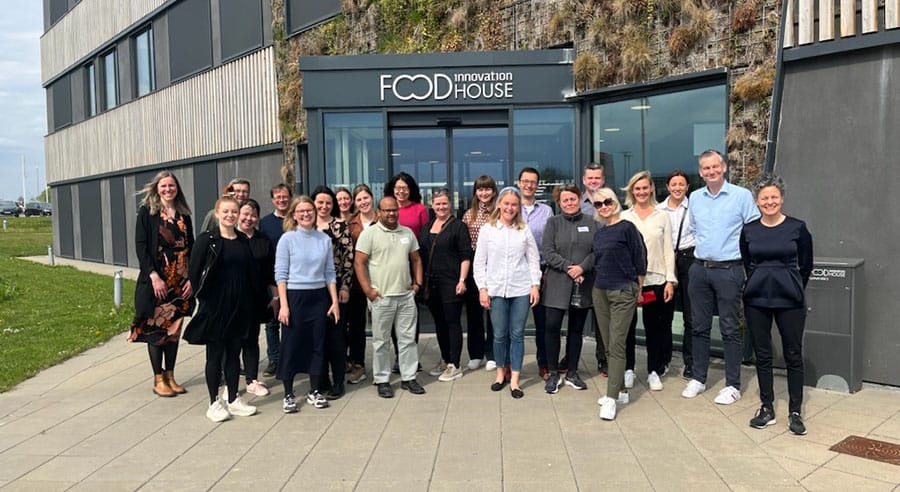
The project partners will continue implementing the project with service design methods: the concepts are presented to stakeholders, and feedback is received for further development. The first version of the KISMET Solution will be ready by the end of June 2023. After the summer, the partners will start creating more detailed implementation plans for each concept and start implementing them in local pilots. In the end, service designing is not so complicated. If you look at the bigger picture, the projects are more or less one big service design process.
If you haven’t heard Finland’s Eurovision song, Cha Cha Cha, you can watch it here.
